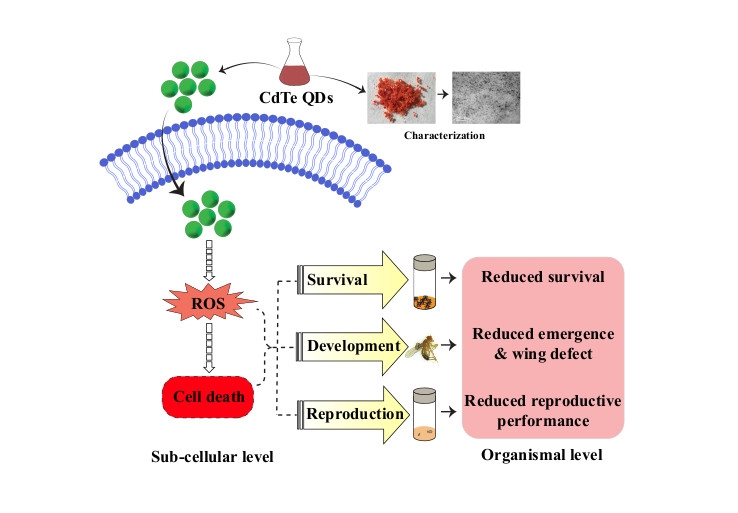
Toxicity of the quantum dots at molecular and organismal levels
Feb 4, 2022
Semiconductor quantum dots (QDs) have gained remarkable attention for biomedical applications like diagnosis, targeted drug delivery, probing cellular processes and are also serving as probes in fluorescence imaging as an alternative to conventional dyes.Dr. Jagdish Gopal Paithankar (First author with equal credit), Prof. Dr. Anurag Sharma from the Division of Environmental Health & Toxicology, Ms. Sharanya Kushalan (First author with equal credit), Prof. Dr. Smitha Hegde from the Division of Bioresource & Biotechnology, NUCSER, Nitte Deemed to be University and Mr. Nijil S, Prof Dr. Sudarshan Kini of the Division of Nanobiotechnology, Nitte University Centre for Science Education and Research (NUCSER) conducted a multidisciplinary investigation on the effect of chemically synthesized 3-mercapto propionic acid-functionalized CdTe QDs on organisms' survival, development, reproduction, and behavior in a Drosophila melanogaster.
Their findings express a concern on the release of the aqueously dispersible CdTe QDs in the environment as the study conclusively proves the toxicity of the quantum dots at molecular and organismal levels. The report is published in the renowned Toxicology Journal "Chemosphere" an Elsevier publication with high impact factor and citation score.


